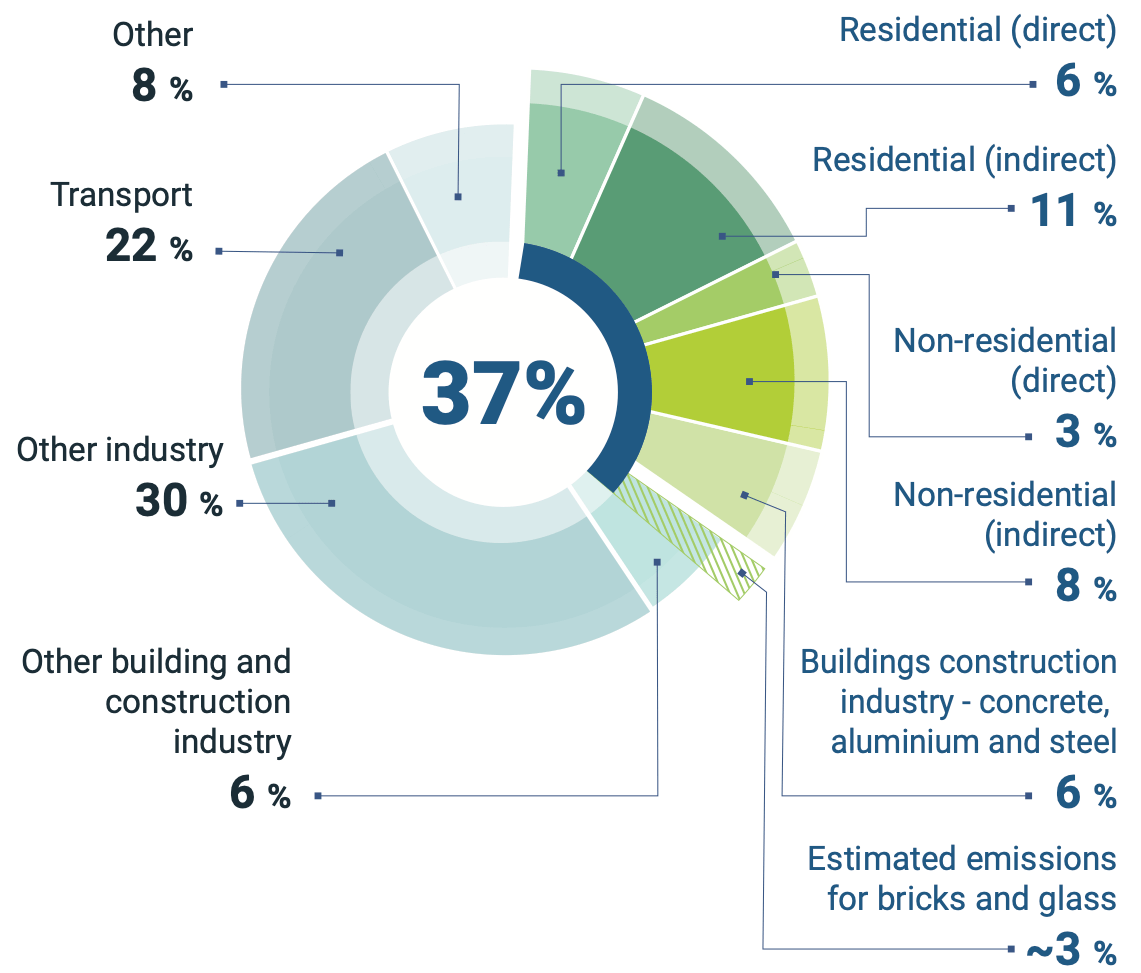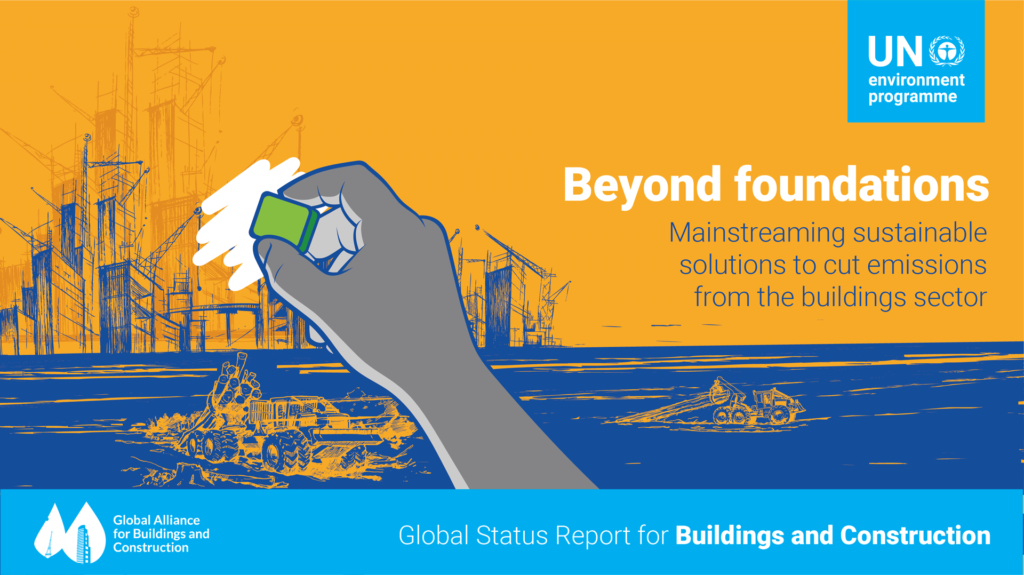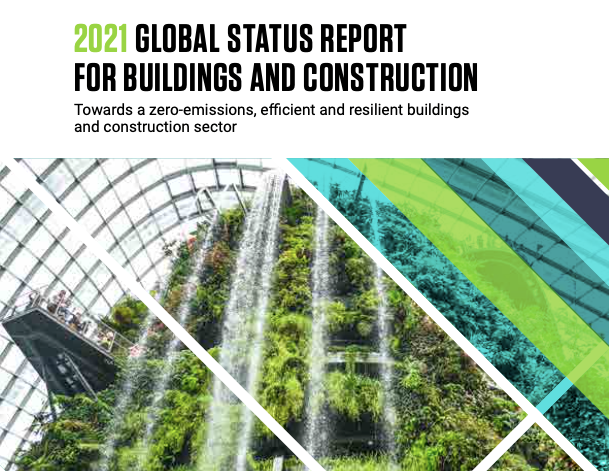2024 Global Status Report For Buildings And Construction

The building and construction sector remains stubbornly off track for decarbonization, consuming over a third of global energy and contributing significantly to CO2 emissions. A new report paints a stark picture, urging immediate and drastic action to avert climate catastrophe.
This 2024 Global Status Report for Buildings and Construction reveals a concerning lack of progress in key areas, despite growing awareness of the sector's environmental impact. It highlights the urgent need for accelerated adoption of sustainable building practices and policies to achieve net-zero emissions by mid-century.
Global Emissions on the Rise
The report, released by the UN Environment Programme (UNEP) and the Global Alliance for Buildings and Construction (GlobalABC), shows that buildings' operational energy consumption and related CO2 emissions increased in 2023. Emissions hit a record high, signaling a reversal of earlier gains.
Specifically, operational energy demand rose to 132 exajoules, surpassing pre-pandemic levels. This increase highlights the challenge of keeping pace with growing building stock and demand for energy services.
Key Findings and Data
The report emphasizes that the buildings sector accounts for approximately 37% of global energy-related CO2 emissions. This includes both operational emissions (energy used to heat, cool, and power buildings) and embodied emissions (emissions from manufacturing building materials and construction processes).
Investment in energy efficiency in buildings remains insufficient. It makes up only 2% of global construction investment. Developed economies are not making a bigger investment to help developing countries.
Material carbon emissions, also known as embodied carbon, account for 11% of the energy sector’s emissions. Urgent attention is needed to address the full lifecycle impact of buildings.
The building sector must reduce emissions by at least 50% by 2030 to be on track with global climate goals. The report notes that the speed and scale of change are far from adequate.
According to the report, the global investment in improving building energy efficiency has remained consistent since 2021. The amount spent on this is around $240 billion.
Regional Variations and Challenges
Progress varies significantly across regions. Developed countries have generally made more headway in implementing energy-efficient building codes and promoting sustainable construction practices.
Developing countries face unique challenges, including rapid urbanization, limited access to finance, and a lack of technical expertise. They often rely on cheaper, carbon-intensive building materials.
Informal settlements, which house a significant portion of the urban population in many developing countries, are particularly vulnerable. Retrofitting these buildings for energy efficiency presents a major hurdle.
Financing is a major barrier, especially in developing countries. Innovative financial mechanisms and international cooperation are crucial to unlock investment in sustainable buildings.
Policy Recommendations and Actions
The report calls for a multi-pronged approach, including strengthening building codes, promoting the use of sustainable building materials, and accelerating the adoption of renewable energy sources. It stresses the importance of enforcing existing regulations.
Governments should prioritize the development of national building renovation strategies. This strategy should support the upgrades in building efficiency.
Circular economy principles should be integrated into the construction sector. Doing so will minimize waste and maximize the reuse of materials.
Increased collaboration between governments, the private sector, and civil society is essential. This coordination fosters innovation and drives the adoption of sustainable practices. The private sector needs to be responsible and held accountable.
The Role of Technology and Innovation
Technological advancements offer significant opportunities for decarbonizing the building sector. Digital technologies can optimize energy consumption and reduce waste.
Building Information Modeling (BIM) allows for improved design and construction processes, reducing material usage and minimizing errors. Innovation in building materials, such as low-carbon concrete and sustainably sourced timber, is also crucial.
The report highlights the importance of adopting a lifecycle approach to building design and construction. This helps account for the full environmental impact of buildings, from material extraction to demolition.
"We need nothing short of a revolution in the buildings and construction sector," stated Inger Andersen, Executive Director of UNEP, in response to the report.
She emphasized the urgency of the situation and the need for bold and decisive action.
Next Steps and Ongoing Developments
The GlobalABC is working to support countries in implementing the report's recommendations and tracking progress towards decarbonization targets. Further research and data collection are needed to better understand the sector's environmental impact and identify effective solutions.
The upcoming COP29 climate conference will provide an opportunity to further galvanize action on sustainable buildings and construction. It presents a global gathering where countries can commit to ambitious targets and share best practices.
Continuous monitoring and evaluation are essential to ensure that the sector is on track to meet its decarbonization goals. A shift towards low-carbon materials and energy efficiency is not only necessary but also an investment in resilient and sustainable communities for the future.


















